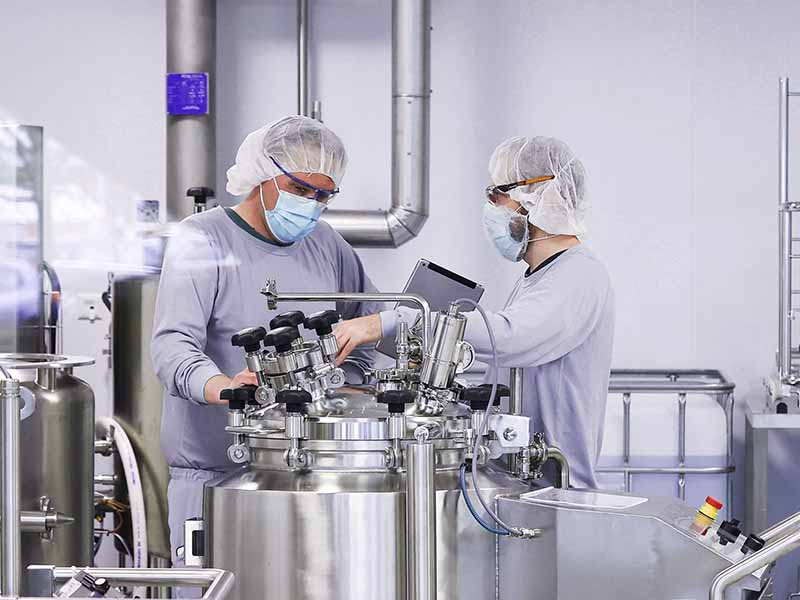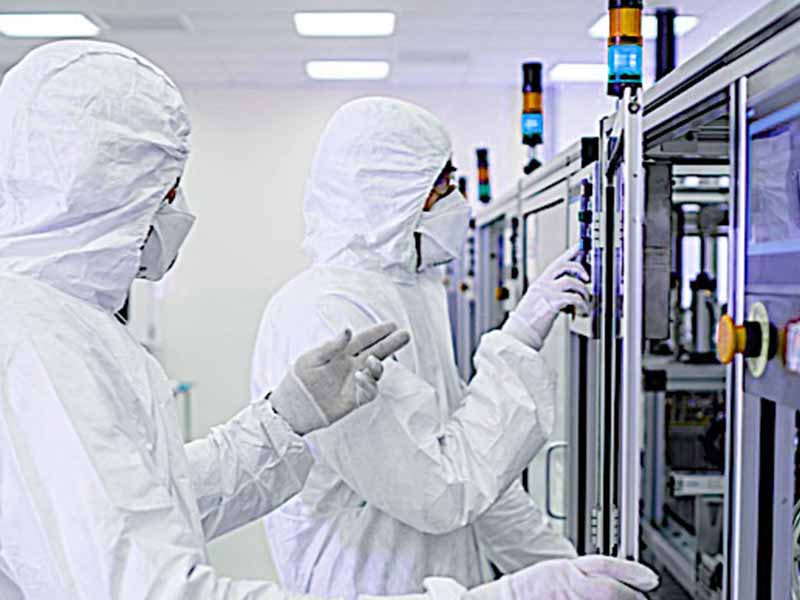Combined with the overview of clean public works used in the pharmaceutical industry, the writing, review and implementation points of URS for clean public works are discussed, in order to provide reference for the URS management of clean public works in the process of building facilities for pharmaceutical companies.

Part 1 Introduction
The URS (UserRequirementsSpecification) of the pharmaceutical industry starts from the perspective of projects and systems, and describes the needs of users, mainly including the compliance of relevant regulations and the specific needs of users. URS, as the basis of system standards, plays a very important role in the entire life cycle of the system.
Part 2 Overview Of Clean Utilities
Clean utilities in the pharmaceutical industry usually include purified water systems, water for injection systems, pure steam systems, clean compressed air systems, nitrogen systems and air conditioning systems, as well as the automatic control systems supporting these systems.
Whether the clean utility system can be installed, operated and passed the acceptance check will be directly related to the quality of medicines.
Part 3 Compilation Of Clean Public Works URS
Usually, the writing of URS is initiated by the user department. For example, clean public works can be written by the engineering department, production equipment can be written by the production workshop, and QC related instruments can be written by the QC department.
However, due to the different organizational structure of each company, the compilation of URS can be assigned according to the actual situation.
3.1 General Requirements
The overall requirements of URS for clean public works, including regulatory requirements, detailed design, economy, operation friendliness, installation, welding, pressure test, pickling passivation, leak inspection, instrumentation, pipeline insulation, etc.
This Article Focuses On The Following Aspects:
3.1.1 Regulatory Requirements
In addition to my country’s “Drug Production Quality Control Regulations” (2010 version), the European Union’s “Drug Production Quality Management Regulations”, Chinese Pharmacopoeia, European Pharmacopoeia, United States Pharmacopoeia and other general specifications and standards, regulations specifically for clean public systems include: ASME BPE Standards, ISPE GAMP5, related pipeline engineering construction and acceptance specifications, related pressure vessel processing and acceptance specifications, related automation instrument engineering construction and acceptance specifications, etc.
3.1.2 Detailed Design
(1) According to the provided drawings and site conditions, carry out detailed secondary design on the direction, elevation, pipe diameter and other parameters of the clean pipeline;
(2) The secondary design should fully consider the cooperation and intersection of the clean public system and other systems, in order to achieve a good space management effect;
(3) Distribution pumps, terminal heat exchangers, instruments, etc. adopt modular design;
(4) Use reasonable layout points.
3.1.3 Operation Friendliness
Operational friendliness means that the requirements for the use, sampling, verification, and maintenance of clean public systems should be fully considered.
3.1.4 Welding
Welding requirements include welding method (automatic welding or manual welding), welding spot number, and inner surface color of weld (refer to ASME BPE welding seam color classification, as shown in Figure 1). In addition, it also includes welding samples, welding spot inspection and welding qualifications (welder certificate, welding log, etc.).
3.1.5 Others
The slope requirements, pickling passivation requirements, instrumentation and probe installation requirements of the clean public system shall comply with the relevant standards of ASME BPE.

3.2 Total Requirements
The technical requirements of the clean public system mainly include mechanical requirements, control requirements, electrical requirements, etc.
3.2.1 Mechanical Requirements
The mechanical requirements mainly include the requirements for the material and roughness of tanks and pipes, and the requirements for various instruments (conductivity meters, TOC meters, temperature meters, etc.) of heat exchangers and water pumps.
3.2.2 Control Requirements
The URS of clean public works should meet the requirements for the control system of the computerized system in Annex 1 of my country’s “Good Manufacturing Practice for Pharmaceutical Products”, the computerized system of Appendix 11 of the European Union’s “Good Manufacturing Practice for Pharmaceutical Products”, and FDA 21CFR PART 11. The specific performance is Requirements for projects such as automation control, electronic records, data recovery, PLC, HMI, I/O, alarm and security.
3.2.3 Electrical Requirements
Electrical requirements mainly include requirements for power supply, cables, electric control cabinet components, electrical cabinets, etc.
3.3 Other Requirements
Other requirements of URS for clean public works include EHS requirements, document requirements, user service requirements, etc. These requirements are relatively simple and can be compiled according to the actual situation, so this article will not repeat them.
Part 4 Audit Of Clean Public Works URS
After the URS is written, it needs to be audited. Usually, internal audits by various departments of the company and joint audits with suppliers are required.
4.1 Internal Audit Of Each Department Of The Company
The internal audit of each department of the company should focus on the following points:
(1) Review of regulatory compliance: URS should be reviewed in accordance with the regulations mentioned in this article (but not limited to).
(2) Process compliance review: For example, URS requires the effective volume of the purified water distribution system storage tank to be 10 m3. In extreme cases, whether each point of use of the system meets the requirements of the production process; Whether to meet the production process requirements.
(3) Review of system disinfection or sterilization compliance.
(4) Examination of the rationality of pipeline layout: for example, the layout of process water pipelines, fire-fighting water pipelines, water supply and drainage pipelines, etc.
(5) Examination of the compliance of the installation and operation of the automatic control system.
4.2 Joint Audit Of Suppliers
After the internal audit of each department of the company is completed, suppliers are generally invited to conduct a joint audit of URS for the purpose of:
(1) Make the supplier understand the specific needs of Party A;
(2) Through the supplier’s feedback on the URS, on the premise of meeting the relevant regulations, the content of the URS is more realistic and forward-looking.
Part 5 Implementation Of Clean Public Works URS
After the URS is written and reviewed, it is necessary to classify and manage the terms of the URS. The terms in the URS can be divided into three categories: I (information) for reference, C (commissioning) debugging, and Q (qualification) confirmation. Appropriate classification reasons should also be given after classification. In general, classification reasons should include process requirements, quality requirements, EHS (Environment, Health, Safety) requirements, Good Engineering Practice (GEP, Good Engineering Practice) requirements and business requirements, etc.
For Reference (I): For reference only, not as a debugging and confirmation requirement, the possible corresponding classification reasons are reference information and business requirements.
Commissioning (C): will be tested in the factory acceptance test (FAT, Factory Acceptance Test) and/or site acceptance test (SAT, Site Acceptance Test), for URS clauses with less impact on process and quality, the classification reasons usually included are GEP requirements and EHS requirements.
Confirmation (Q): It will be confirmed according to official regulations and guidelines before pharmaceutical production, usually including classification reasons for process requirements, quality requirements and EHS requirements (except for noise and dust tests, there will be a separate EHS test for such tests file support), etc.
After the above classification of URS, the function and level of each clause in URS will be clearly displayed, and the personnel of relevant departments can carry out corresponding work according to the content of the clauses that have been reviewed and classified by URS.
Part 6 Conclusion
This article discusses the key points of writing, reviewing and implementing URS for clean public works in the pharmaceutical industry.










